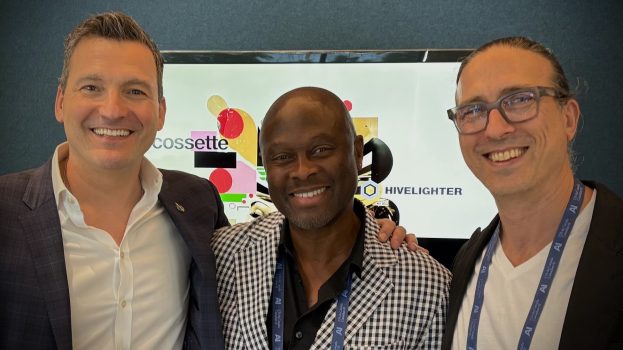In this second installment of our six-part series, Thinkingbox’s chief growth officer Alex Panousis explores what CMOs need to know about AI today, diving deep into insights on adoption, challenges, and opportunities. Check out the first part with The Vector Institute’s Tony Gaffney here.
In the ever-evolving world of advertising, few roles stand out as truly pioneering. Perry Nightingale, SVP of Creative AI at WPP, might have one of the coolest jobs in the industry. A self-taught coder with a knack for identifying cultural shifts, Nightingale has spent the past five years helping WPP integrate AI into creative workflows, transforming the way campaigns are ideated, executed and scaled.
In his own words, Nightingale describes his journey into AI as a series of “reinventions.” It began in 2016 when he witnessed “The Next Rembrandt,” a campaign that used AI to create a new painting in the style of the Dutch master. “It was a turning point,” he recalls. “I realized AI wasn’t just a tool – it was going to be a cultural phenomenon. It wasn’t just about making ads; it was about how technology could create entirely new possibilities for storytelling.”
Nightingale dove in, teaching himself everything there was to know about AI at the time, and eventually landed his current role. “When I joined WPP, I spent the first year just explaining what my title meant,” he jokes. But today, Creative AI is a cornerstone of the agency’s offering, with Nightingale at the helm of some of the most forward-thinking projects in advertising.
While an evangelist, Nightingale is quick to caution CMOs against the hype surrounding AI. Platforms like ChatGPT have democratized access to AI tools, but he argues that true innovation lies in scaling those tools effectively. “There’s a misconception that AI is a magic wand,” he explains. “The reality is that it’s incredibly hard to use at scale. A single mistake… can erode trust in your brand.”
Take Coca-Cola’s 2024 holiday campaign that was, in part, developed by AI. The work received significant backlash for a perceived lack of authenticity. Some viewers described it as “soulless,” “unnatural” and “devoid of any actual creativity” – others identified visual inconsistencies and glitches within the ad, such as unnatural animations and distorted figures.
One of the biggest challenges, says Nightingale, is quality control. “It’s not enough to generate 20,000 assets quickly; they need to be perfect. That’s where human intervention remains critical,” he says. One solution for this has been in blending AI with other tools like 3D rendering. “We’re combining technologies to ensure brand fidelity and product accuracy, using AI to speed up processes without compromising quality.”
He also highlights the importance of training. “We’re spending half our budget on upskilling talent,” he says. “It’s not about replacing jobs – it’s about empowering people to use these tools. The most exciting part is bringing new, diverse voices into the mix, especially women and underrepresented groups. AI should be a democratizer, not a gatekeeper.”
While AI can enhance storytelling, Nightingale acknowledges that the technology is still evolving. “There’s an uncanny valley effect in a lot of AI-generated content,” he admits. “It’s great for brand equity and innovation PR, but we’re not at the point where it can replace human creativity.”
Looking ahead, Nightingale sees AI playing a significant role in areas like programmatic media, content creation, and localization. “AI is accelerating trends that were already in motion,” he says. “We’re seeing shorter content cycles, more automation, and an increased focus on data-driven personalization.”
For CMOs looking to integrate AI into their strategies, Nightingale offers a few words of wisdom:
-
- Think beyond the hype: AI is not a one-size-fits-all solution. Be cautious of companies and platforms promising miracles without considering the challenges of scaling.
- Focus on training: Equip your teams with the skills they need to succeed. “The real magic happens when people know how to use these tools effectively,” he says.
- Start small, then scale: Random acts of AI experimentation can be great for PR, but systemic approaches yield real results.
- Blend technologies: AI works best when combined with other tools like 3D rendering or traditional production techniques.
Nightingale believes the key to success lies in balancing the promise of AI with the reality of implementation. “It’s not about replacing people – it’s about enhancing what they can do,” he says. “AI is just another tool in the creative arsenal. It’s up to us to use it wisely.”
Perry Nightingale serves as the SVP for Creative AI at WPP. Leaning on his experience as a software engineer specializing in artificial intelligence and computational creativity, Nightingale collaborates with WPP’s creative global agencies on campaigns and he also advises major clients on digital disruption and brand-led innovation.
























